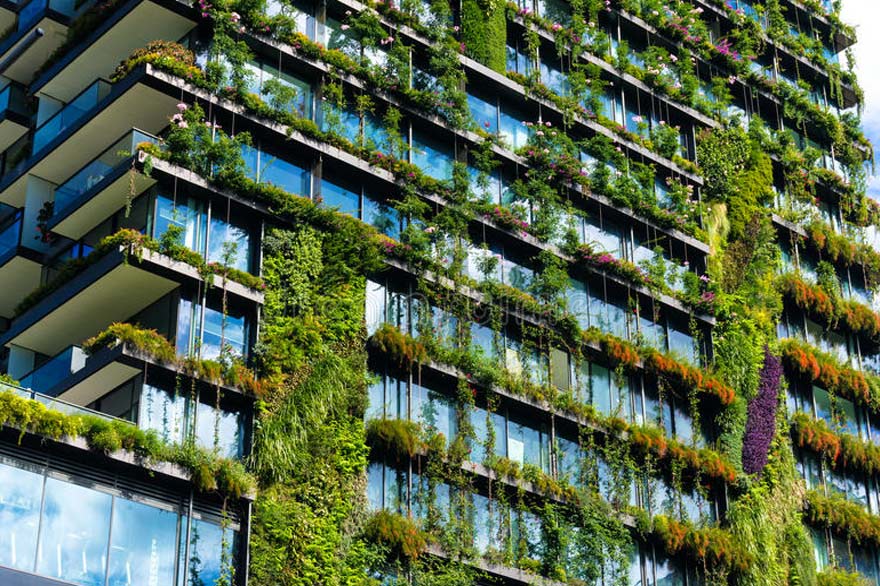In the energy-climate issue, the building sector (residential and tertiary) presents a particularity: among the various sectors of energy consumption, it is proportionally less emitting GHGs (1) as an energy consumer. These relatively good performances in terms of the fight against climate change must be balanced by a recent development that may seem paradoxical. Explanations.
Athe Grenelle Environment Round Table (2008-2010) and the Energy Transition for Green Growth Act (TECV) of 18 August 2015 have given high priority to actions concerning buildings, despite the financial efforts devoted to their renovation (2), The monitoring indicators of the National Low Carbon Strategy (NLCS) published in January 2018 by the Ministry of Ecological and Solidarity Transition indicated that the sector's greenhouse gas emissions in 2016 would be 11 % higher in 2016 than the indicative annual cap set for it. Energy consumption in the residential-tertiary sector, which has varied little in recent years, amounts to 67 Mtoe per year (3), divided between 26 Mtoe of electricity (300 TWh), 11 Mtoe of renewable thermal energy and 30 Mtoe of fossil fuels (two-thirds of which is gas, equivalent to 265 TWh HCV (4)). (climate-corrected data).

Fossil fuel savings are relatively quicker to achieve and cheaper to commit to in this sector than in others, such as transport. However, the implementation of thermal renovation of buildings comes up against an extraordinary heterogeneity: situations (new or old buildings, public or private, rented or not, residential or professional, urban or rural, etc.) are very different from one country to another.), professions (energy specialists, masons, engineering offices, architects, financiers, etc.) and the law, both national and local, which has sedimented, often for generations, provisions relating to taxation, urban planning, good neighbourliness, aesthetics, heritage conservation, etc.
Successive legislations, such as efficient thermal regulations especially for new buildings, support measures for thermal renovation and the plans that accompanied them have simultaneously aimed at three objectives :
1) improving energy performance (combined, in particular, with a desire expressed in several forms - sometimes awkwardly - to act in favour of the security of energy supply),
2) support for an economic sector that is crucial for employment and growth (according to the adage "When building goes, everything goes!")
3) the reduction of precariousness, especially in the energy sector.
At the European level, the Eco-design (2009), Energy Performance of Buildings (2010) and Energy Efficiency (2012) Directives had the same goals, and the European Commission is advocating an increase in their ambition following the publication of the Clean Energy for All Europeans Legislative Package (November 2016). Innovation, both in technology and financing, is active in the field of energy retrofitting and is tending to change the situation compared to the recent past when constraints and subsidies were seen as almost the only possible avenues for improvement. As a result, there are encouraging prospects for a "gear shift" and the achievement of the ambitious objectives set by the TECV law. The building sector is indeed a key sector for an energy transition that both contributes to the decarbonisation of French society and is supportive and inclusive.
At a time when, after extensive consultation with stakeholders, the government is launching a new "Energy Retrofit Plan for Buildings", in addition to the "Sustainable Building Plan", the "Action Plan for Construction Quality and Energy Transition", the "Digital Transition Plan for Buildings", etc., it is important to agree on the objectives of this transition.
Ségolène Royal, Minister of Ecology, Sustainable Development and Energy, said during her presentation of the bill on the Energy Transition for Green Growth to the Council of Ministers on July 30, 2014: "The energy transition aims to prepare for the post-oil era and to establish a new French energy model that is more robust and sustainable in the face of energy supply issues, price trends, the depletion of resources and environmental protection imperatives.
The fight against climate change is obviously part of these objectives and the reduction of GHG emissions should therefore be a central concern of existing or future plans, as well as of the many binding or incentive schemes accompanying them.
The latest issue of Responsabilité & EnvironnementThe report, devoted to the Building Sector in the Energy Transition, seeks to identify the specific features of this sector, the difficulties it faces and the remedies that can be applied, as well as the opportunities, particularly in terms of economic competitiveness, that are open to it to participate in the great ecological project of the beginning of the 21st century.
Highly exposed to regulations, at least for construction, which is the subject of a specific article in this issue, as well as to various tax incentives (ISCED, zero-rate loans, reduced VAT, etc.) or subsidies, the energy performance of a building, whether new or old, also depends on the behaviour of its inhabitants/occupants and its characteristics (main or secondary residence, professional use, individual or collective heating, heating method, etc.).
As such, Marie-Christine Zélem brings her sociologist's perspective, which allows us to better understand the inertia that hinders the transformation of our buildings. On another level, Yamina Saheb defends a new model of industrialization of the building energy renovation sector thanks to a paradigm shift that facilitates technological breakthroughs and allows for renovations that are both comprehensive and efficient.
Other articles complement these examples and demonstrate the dynamism and imagination of stakeholders in placing buildings at the heart of the energy transition.
The editorial choice that governed the development of this issue has led to the distinction of three parts: l Energy in buildings: an inventory; l Building actors and building users; l Technological perspectives.
Mireille CAMPANA and Richard LAVERGNE - Conseil général de l'Économie for Le magazine Responsibility & Environment, APRIL 2018 - N°90 - © Annales des Mines
(1) Greenhouse gases.
(2) In 2017, the French National Housing Agency (ANAH) will renovate 52,000 housing units to make them more energy-efficient.
(3 ) Source: CGDD-SDES.
(4) Gross calorific value












